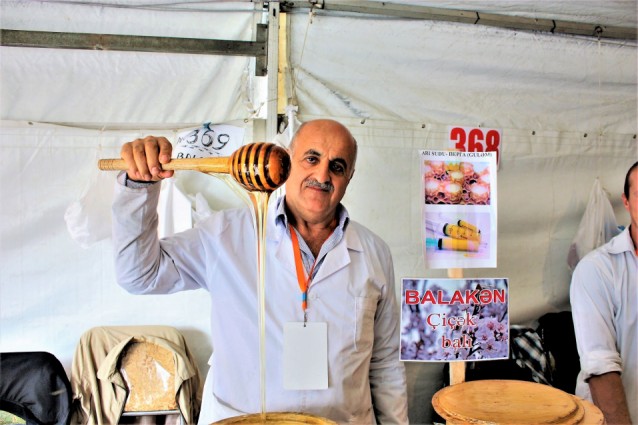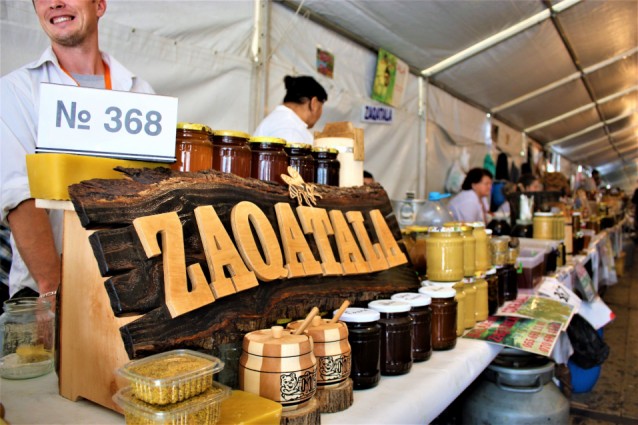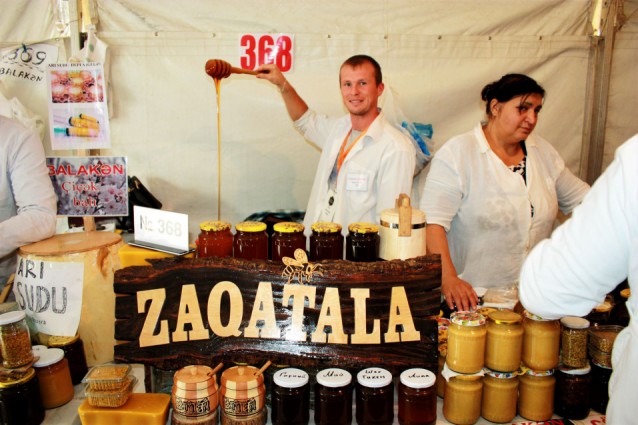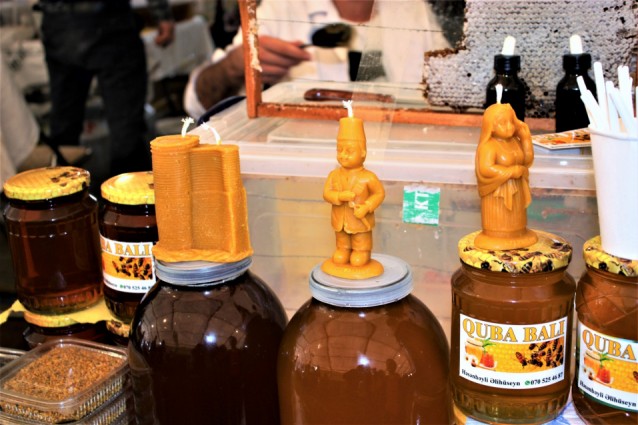Baku’s 19th Annual Honey Fair started up on 5 October and is running until the 28th, and yesterday David Maximovich from Visions made a trip down there to see what all the buzz was about.
Nestled inside half a dozen long white tents outside the Tofiq Bahramov Stadium, which is located next to the Genjlik Mall and an easy walk from the Genjlik metro, a hundred or so honey venders in white lab coats sat peddling their wares. Everywhere, barrels of honey, beehives, banners and photo boards showed off the work of beekeeping operations from around the country. The first beekeepers I came to were from the Qakh region, and were selling honey from linden tree blossoms. Lindens are also known as lime or basswood in other parts of the world. The honey had a light amber hue and was smooth, with a slight woody taste. It is well known in this part of the world for its supposed ability to strengthen the immune system and ward off colds.
Further down the line, I came to beekeepers from Zaqatala. Their business, which consisted of about 160 hives, has been family run for four generations. They also had linden honey, as well as a number of mountain wildflower honeys. Each one had its own unique flavour subtleties. Some were more acidic, others were richer and almost like caramel. They ranged in colour from almost white to dark brown, and in consistency from syrupy to solid. According to one beekeeper, there are at least three dozen varieties of honey in Azerbaijan, though with the hundreds of beekeepers participating from every corner of Azerbaijan, the diversity of taste within even a single type of honey was noticeable.
Walking through the tent, I sampled honeys from north, south, east and west. By the end of the first row of venders, I was already tingling with a sugar high. I turned down the next aisle and as they saw me coming, I heard calls of “Qardash!” Brother! Try some Balakan honey! and Come here my hungry friend! Sample some of Sheki’s best! and Here, try some from Dashkasan! I took a breath and dove in for more.
Beekeepers joyfully offered me honey samples by the spoonful or still in the comb. Most kinds were selling for 20-25 manat a kilo. Many tables also offered pollen granules in small containers for 8-12 manat. They are said to have high vitamin content and be great immune boosters. I was told that they can be taken on an empty stomach or mixed in with honey to help ward off colds and infections, and also to help improve concentration and eliminate mental fatigue.
Many of the vendors also had an assortment of handicrafts for sale. There were laminated honeycombs set into oak panels cut in the shape of butas and ornate wooden honeypots. There was also a variety of beeswax candles, some of which were in simple circular designs, and others were moulded into national symbols such as the Maiden Tower. Bears and bees were everywhere, some in wax, some painted on plaques, and some carved into hardwood. Some live bees flit about here and there and alighted on my sticky hands to reclaim some of their stolen honey. Fortunately, there were no live bears.
In the end, I settled on what I felt to be the best honey I had tried and bought a jar to take home to my family. But I won’t tell you which one it was. You need to go and sample some for yourself, if not this year, then at next year’s 20th Annual Honey Fair.




